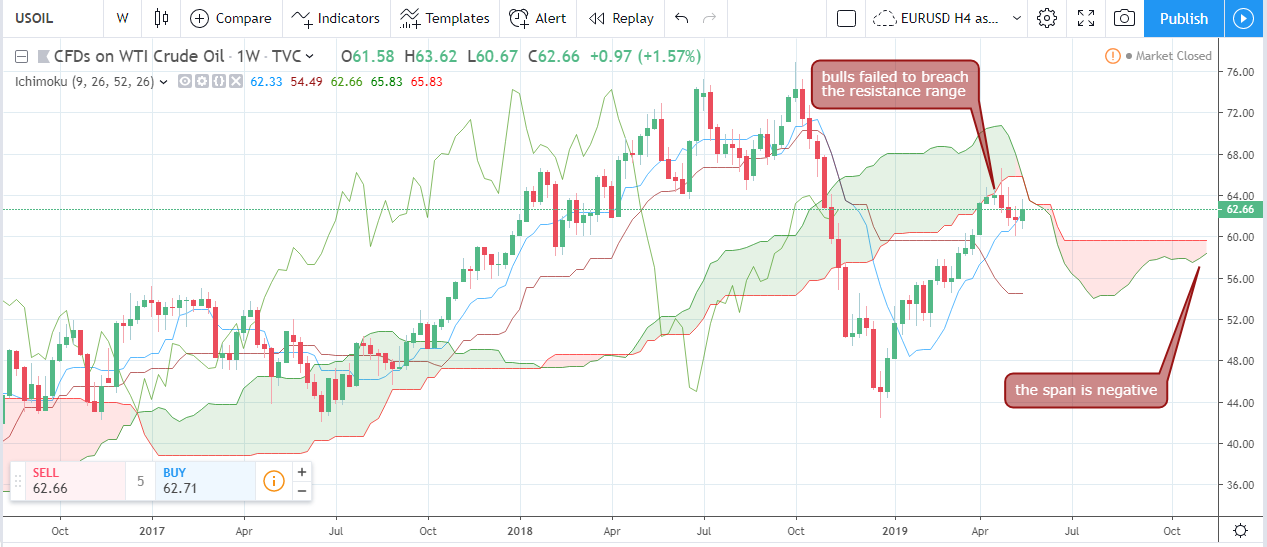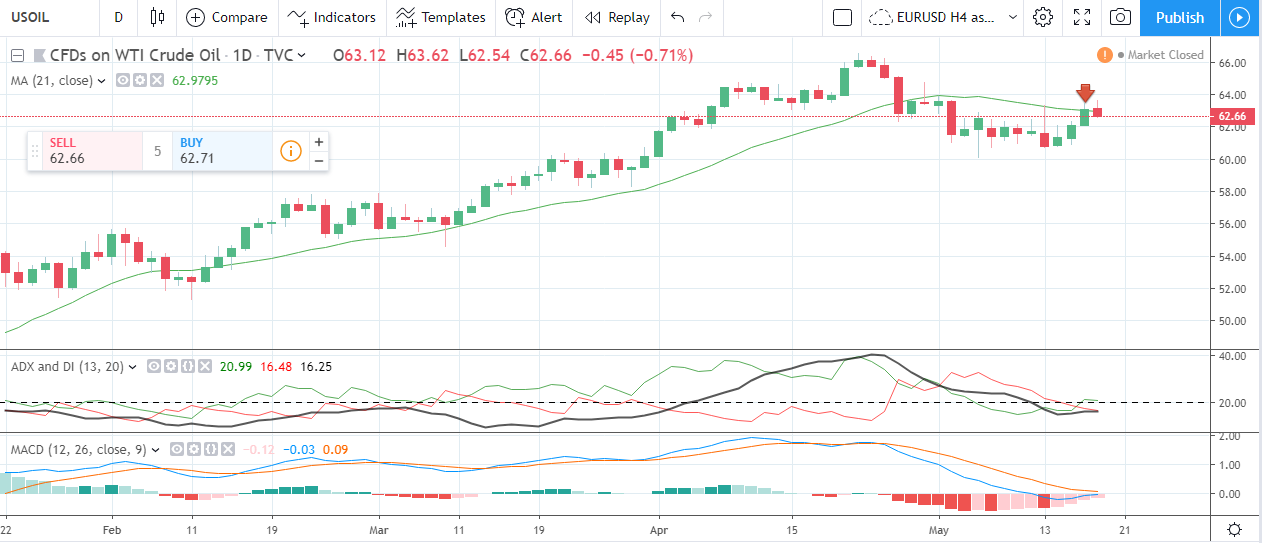6 reasons why WTI Crude Oil price could drop this summer.
First, U.S. oil shale production beats record levels. The leading world’s economy is seriously intended to obtain leading positions in oil exports after the historic decision to get into the overseas markets. According to many informative sources related to the situation in the internal U.S. crude oil market, imports volume fell dramatically after U.S. companies faced another round of oil rush, increasing the production capabilities and refineries’ productivity. Even Canadian exporters, who traditionally hold leading positions in the U.S. internal market, noted substantial competition barriers from local refineries, increasing the supply. If that trend continued this summer, oil output could significantly overweight the demand not only in the United States but also globally.
Second, consumption levels declined in the United States this spring, and it’s not only about the warm season. U.S. Crude Oil Inventories report showed that weekly figures used to jump to unprecedented 9 million barrels on a weekly basis several times this year. Even though the data volatility remained high, and many weekly reports showed a decent decline in crude oil stocks, such significant change points to lower consumption levels. Consumer spending and inflation levels stayed quite low in the leading world’s economy, while average earnings and wages were flat despite a robust labour market and historically low unemployment. Nonetheless, official agencies report a sizeable decline in oil consumption.
Third, the Middle East tensions and OPEC uncertainty on the back of geopolitical pressure. U.S. President Donald Trump continues pressuring overseas partners and competitors amid the aggressive geopolitical strategy. Trump kept bombarding Twitter in order to push on Saudi Arabia and lower the oil price. He continuously pointed out that Saudi’s decision to cut oil production was nothing but artificial intervention in the oil market, while supply/demand issues should determine prices. The OPEC+ deal suggested a significant cut of oil output volumes form the Middle East, while Saudi’s partners UAE and Qatar agreed to lower the exports volume. However, the recent development showed that state-owned oil exports company Saudi Aramco decided to stop the artificial practice, reflecting more considerable demand and increasing the output. Once OPEC partners noticed Saudi’s initiative to go against the OPEC+ agreement, they would join the process, trying to fill the gap of their oil production. That would lead to lower oil prices.
Fourth, supply concerns over Iran and Venezuela were overestimated. Despite the U.S.’ activity in the geopolitical scene, and new sanctions against Venezuela and Iran at full capacity, the market players did not play out the shortage concern. WTI Crude price failed to edge higher than the previous market’s top around $66 per barrel, which could be comprehended as bulls’ inability to lift the further price North. Therefore, the uptrend started this year might reverse the direction entirely.
Fifth, the long-term technical sentiment remained negative despite this year’s bullish rally. The weekly chart below shows that Ichimoku Cloud trend indicator stayed bearish as the span did not perform the bullish crossover yet, and prices did not breach the resistance zone of the cloud. Moreover, the peak of the upwards action was limited by the bottom band of the span as the only shadow entered the uncertainty zone. As a result, the bearish bounce occurred, leaving long whipsaws on the candlestick in the week of April 22. The support curve held prices from further depreciating so far, but the bears are very close to pushing WTI Crude oil below the Ichimoku Conversion line, and the whole ascending formation would appear in the danger of collapse. If the bears were able to breach the support range of $60.70/62.33 per barrel in the upcoming weeks, a deeper slide towards Baseline support ($54.62 per barrel currently) would be likely.

Sixth, the daily timeframe turned negative. The past week’s price action brought several negative technical factors to the overall sentiment. MACD histogram dropped below the zero levels, while MACD lines crossed each other signalling a bearish reversal. ADX and DI indicator went into the bearish zone as its mainline crossed the threshold, and -DI line (red) jumped above the +DI line (green). Current price failed to breach the 21-day simple moving average last Thursday (red arrow on the daily chart below), underlining weak bullish momentum after the plunge on April 22. If oil speculators failed to push quotes back above $64.00 per barrel, then the sellers could take the market under control, driving the black gold below the local bottom of $54.55 printed on March 8.

Read also